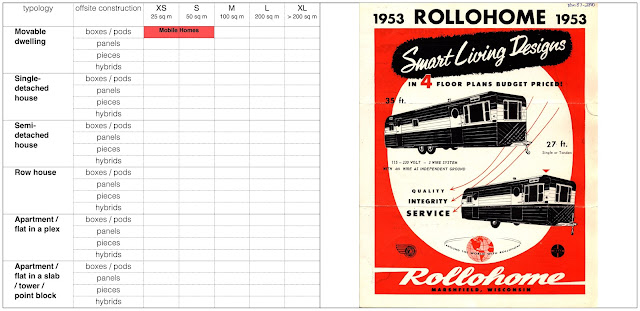City form is dependent on housing patterns. Urbanity stems from tuning how services are allocated, distributed, and pooled. From the row house to the collective housing block, amassing dwellings around collective infrastructure is an effective and frugal approach for streamlining services while deploying less space to accommodate more people. Sharing a wall is the most elemental way to breed commonalities from single family houses.
The semi-detached house unites two dwellings that can be clustered to form larger tracts. The party wall divides and defines ownership while reducing construction costs as two holders share what would be the 4th wall of a detached dwelling. The partition is habitually codified to be built in masonry to protect neighbouring spaces from fire. The demising partition could also be combined with linear zoning of service spaces to reduce sound transmission through units. The low-rise semi-detached home also reduces costs associated with civil infrastructure provision as connections are optimized to serve two homeowners. Developing tract housing from a repeating semi-detached module demonstrates a potential seriality to improve housing supply.
Le Corbusier's Loucheur Houses (1928) and Rural Houses (1950) were never built, however both proposals illustrate how semi-detached houses could be deployed to structure efficient schemes. The Maisons Loucheurwere designed as part of a government program (The Loucheur Law) aiming to stimulate social housing and reap the steel industry’s potential toward building industrialization. Arranged in a garden city like framework each dual-dwelling would be manufactured down to interior furnishings and a patented sanitary unit using industrial materials (steel, glass and aluminium).
Conceived as mirror images, opportunities for customization were limited and the objective was to achieve economies of scale comparable to those made possible in car production. The thick party wall served a double function of separating and insulating both houses. The floor plan of each dwelling combined core service principles with the reproducible potential of the semi-detached type. The 68-unit sprawled suburban plan for Lagny, France elevated each unit over a liberated ground plane used for vehicular parking, an entrance and an interior garage, workshop or flexible space to suit its specific user’s preferences.
 |
| Le Corbusier's semi-detached prototypes |














